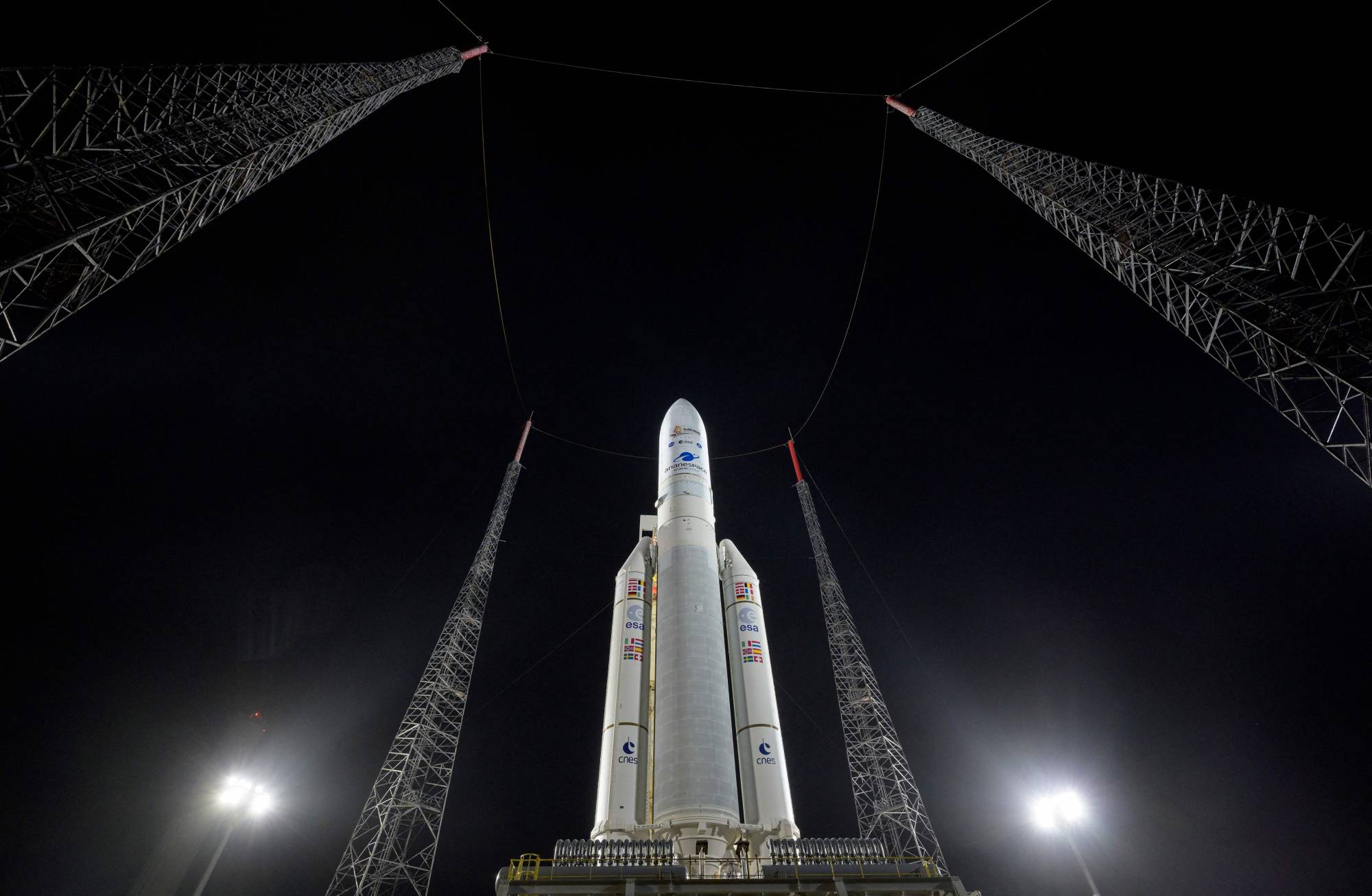The largest, most expensive and most sophisticated space telescope ever made is scheduled to lift off on Dec. 25 from the north coast of South America. At its eventual orbital station 932,000 miles (1.5 million km) from Earth, the James Webb Space Telescope might just see to the beginning of time.
The farther one looks in space, the further back in time one goes. When Webb begins its work in mid-2022, it will help scientists study some of the earliest light in the universe and peer more closely at planets in other galaxies. More than 30 years after NASA launched the Hubble Space Telescope, its much bigger successor is designed to see through the most ancient mists of deep space.
The almost $11 billion (¥1.24 trillion) telescope, more than two decades in the making, is a National Aeronautics and Space Administration (NASA) collaboration with the European and Canadian space agencies. It’s currently scheduled to launch early on Dec. 25 from the European Space Agency’s South American spaceport in French Guiana aboard an Ariane 5 rocket.


















With your current subscription plan you can comment on stories. However, before writing your first comment, please create a display name in the Profile section of your subscriber account page.